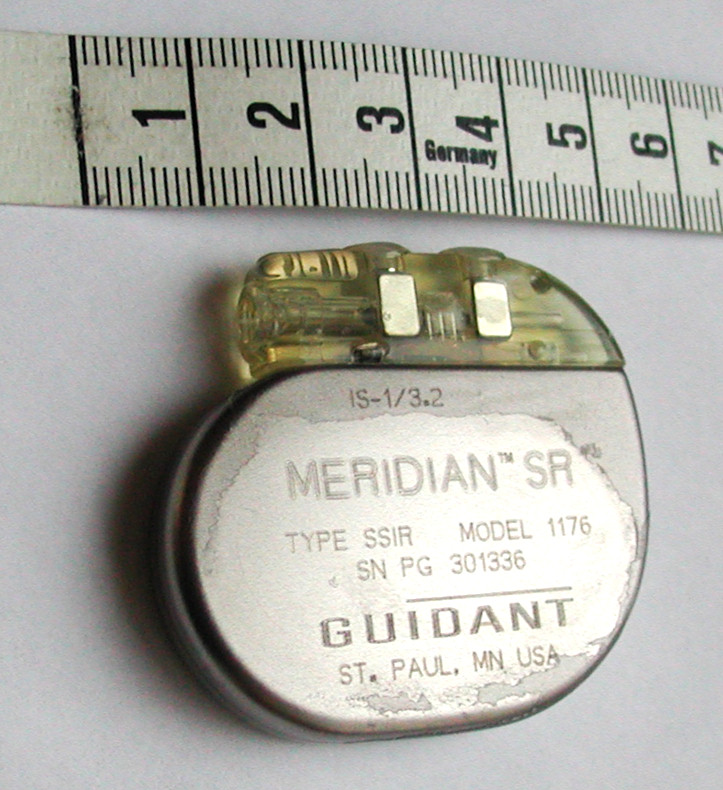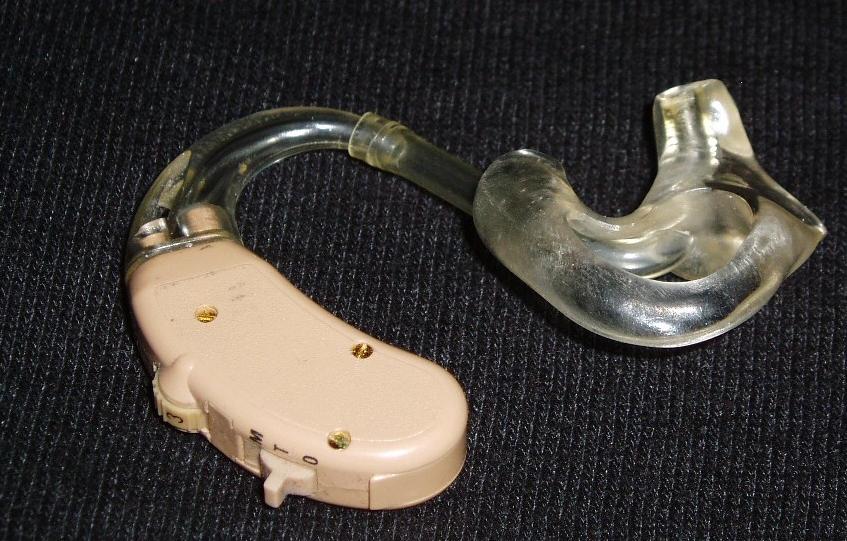Technology today has advanced tremendously until the point where we could now place tiny computer chips inside or outside our bodies to help us live out our daily lives.
There are many electronic or robotic devices that are adaptable to the human body such as:
Artificial Pacemakers
A pacemaker or artificial pacemaker, so as not to be confused with the heart's natural pacemaker, is a medical device which uses electrical impulses, delivered by electrodes contracting the heart muscles, to control the beating of the heart. The primary purpose of a pacemaker is to maintain a steady heart rate, either because the heart's natural pacemaker is not fast enough, or there is a block in the heart's electrical conduction system. Modern pacemakers are externally programmable and allow the cardiologist to select the optimum pacing modes for individual patients. Some combine a pacemaker and implantable defibrillator in a single pacemaking device. An external pacemaker was designed and built by the Canadian electrical engineer John Hopps in 1950 based upon observations by cardio-thoracic surgeon Wilfred Gordon Bigelow at Toronto General HospitalIn the late 1960s, several companies, including ARCO in the USA, developed isotope powered pacemakers, but this development was overtaken by the development in 1970 of the lithium-iodide cell by Wilson Greatbatch. Lithium-iodide or lithium anode cells became the standard for future pacemaker designs.

Prosthetic Legs
The human leg is a complex mixture of functions. And that's also very much the case with a prosthetic leg.
A prosthesis is a replacement limb made up of a number of parts.
 The first component of a prosthetic leg is usually a silicone liner, which is rolled on to the residual limb. Made of a soft, stretchy material
that acts as an interface between the hard, weight-bearing socket and the skin, the liner protects the limb and attaches through a prosthetic lock to the other parts of the prosthesis.
The first component of a prosthetic leg is usually a silicone liner, which is rolled on to the residual limb. Made of a soft, stretchy material
that acts as an interface between the hard, weight-bearing socket and the skin, the liner protects the limb and attaches through a prosthetic lock to the other parts of the prosthesis.
Once the silicone liner is on, the residual limb then slides into a hard socket. This prosthetic socket is specially made to fit and is made out of carbon fibres, the same material used in our unique feet.
The hard socket above-knee has a prosthetic knee joint connected to it.
Below that is an aluminum or carbon fiber tube to which a prosthetic foot module is connected.
In between the main parts of a prosthetic leg are smaller components or adapters that connect the main parts together and properly aligns the leg.
Hearing Aids
A hearing aid is an electroacoustic body-worn apparatus which typically fits in or behind the wearer's ear, and is designed to amplify and
modulate sounds for the wearer. earlier devices, known as an "ear trumpet" or "ear horn", were passive funnel-like amplification cones designed to gather sound energy and direct it into the ear canal.
There several types of hearing aids:

Robotic Legs
A Japanese researcher has demonstrated a pair of robotic legs that can walk up and down stairs and could eventually find use as a wheelchair substitute.
Atsuo Takanishi, an engineering professor at Tokyo's Waseda University has been working on the machine since 2003 with robot manufacturer tmsuk Co. Their goal has been to create a two-legged robot that can fully operate in a human environment.
The latest version of the robot the WL-16RIII is operated using a pair of joysticks. This device could serve as a wheelchair replacement, allowing elderly or disabled individuals who may not be able to easily move around with their wheelchair, but can use the robot.
Takanishi and tmsuk hope to have a model ready in the next year or two that could be used to play sports.
Robot Video